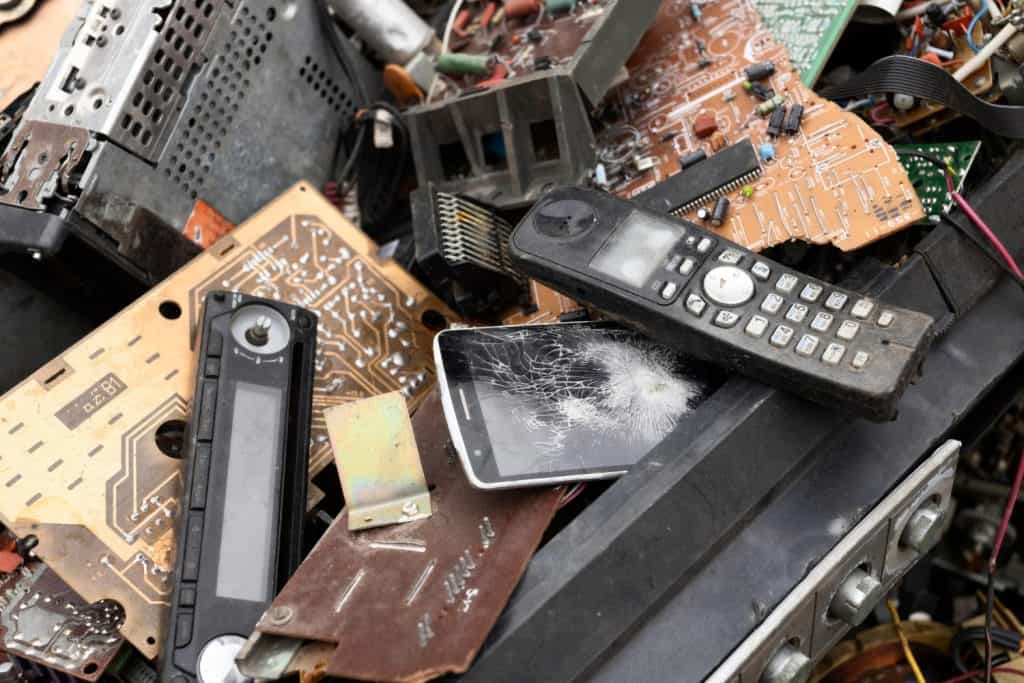
In This Article
Electronic waste (e-waste) is becoming a very dangerous issue. Every year, millions of electric devices are discarded as they break down or are simply thrown away and they are becoming a health risk for the environment and humans very quickly.
Due to their explosive demand and short life, this issue is not expected to simply go away any time soon. We need to understand the issue and the toll it has on our planet if we are ever to address it properly.
What is electronic waste?
Every discarded electronic device that exists in the world is considered as electronic waste. From discarded smartphones and obsolete laptops to outdated televisions and defunct gadgets, all of these devices are made from many components. Electronic waste contains up to 60 different types of metals, such as copper, gold, silver, palladium, aluminum, and iron. The most dangerous of them are a variety of heavy metals, specifically lead, mercury, and cadmium.
Most of the parts that electronic waste is made from is recyclable. Recycling, then, becomes a very useful, cost-saving and environmental-friendly measure. However, current efforts have not been enough to take advantage of this fact.
The scale of the issue
Electronic waste and electronic equipment is quickly becoming one of the world’s largest solid waste streams in the world. According to the World Economic Forum (WEF), in 2021 around 57.4 million tonnes of electric waste were produced and it is expected that subsequent years have maintained similar levels. Other reports, such as the United Nations University’s 2020 Global E-waste Monitor Report estimated that in 2019, the world produced around 53.6 million tonnes of waste. This represented a worldwide increase of 21% in just 5 years.
Alarmingly, only 17% of all this waste is being properly collected, processed and recycled. The remaining waste generated is either idle in homes and businesses or is being disposed improperly.
Why does this happen? Well, addressing the issue of e-waste pollution is complicated, with multiple factors that affect the decision-making and limits the viability of possible solutions. The most pressing issues are explored as follows:
Product design and technological complexity
The current industry of electronic goods and services is not meant to build long-lasting products, but ones that you need to replace every few years. The rapid advancements in technology and the constant influx of new products exacerbate the issue and has been doing it for a while. Some sources claim that phone’s replacement cycle has remained fairly consistent of around 2.5 years since 2013. Also, according to a research paper published by the Obafemi Awolowo University of Nigeria, since 2011, the price of electronics have only become cheaper and with it, their lifespan has only become progressively shorter.
This suggest that
This notion that companies are deliberately planning obsolesce effects on their products to encourage users to replace them every few years is actually a business strategy called planned obsolesce, in which a product is designed and built from its conception, by the manufacturer, to become obsolete, unfashionable or no longer usable. This is done with the goal to encourage consumers to purchase new products and services, replacing their old ones.
To address this issue, there needs to be a deep change in the philosophy of companies that encourage them to design their products and services to both last longer and be able to repair it or recycle them easily. However, for that to happen there needs to be a lot of investment to develop the necessary infrastructure to disassemble and recycle electronic devices efficiently.
We need to transition to a circular economy for electric products, in which the value chain is completely transformed, allowing for easy recycling methods of the diverse range of materials used in electronics. This, however will be a costly and challenging endeavor, as all endeavors are.
Some organizations, such as PACE, have developed agenda strategies to encourage circular economy practices within companies that align with sustainability principles and practices.
Consumer behavior
There is some research that covers how human behave and the pattern of consumption of electronic products and goods. There is some amount of evidence that suggests that people are buying and replacing their existing electronic products with newer models before the end of their life cycle. According to another study, there is a sociocultural factor involved, in which people’s perceived value of a product or service plays an integral part in their decision making. If the perceived value of the new product exceeds the one they currently own, people might be more willing to acquire the newer model.
Actionable Advice for Addressing E-Waste Challenges
Despite the complexity and limitations in addressing e-waste, there are actionable steps that individuals and organizations can take to mitigate its impact:
- Advocate for responsible disposal: Encourage the proper disposal of e-waste through official recycling channels or donation to recyclers.
- Support recycling initiatives: Promote and participate in e-waste recycling efforts to conserve natural resources and reduce environmental pollution.
- Raise awareness: Educate yourselves and others about the factors involved with electronic waste management, empowering each other to make better consumer decisions.
- Advocate for policy changes: Support policies and regulations that promote sustainable e-waste management, as well as changes in products and services that are more aligned with circular economy principles.
Conclusion
Addressing the complexity of electronic waste requires a multifaceted approach that involves governments, industries, consumers, and advocacy groups. While challenges exist, concerted efforts toward regulation, innovation, awareness, and corporate responsibility can pave the way for sustainable solutions.
Each individual action, whether it’s choosing repair over replacement or advocating for stricter regulations, contributes to the collective effort in mitigating the e-waste crisis. Together, we can navigate the complexities and limitations to build a future where technological progress aligns harmoniously with environmental preservation.



